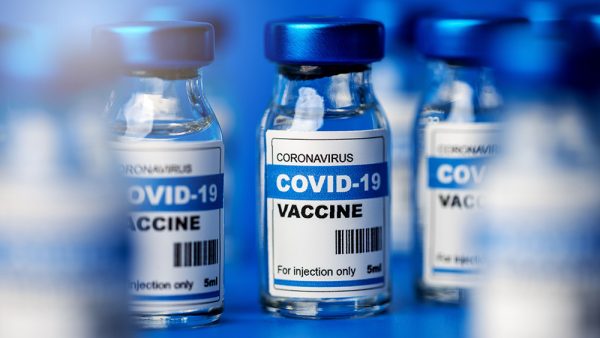Prenatal phthalate exposure linked to disrupted newborn metabolism and impaired neurodevelopment
By ljdevon // 2025-04-04
Tweet
Share
Copy

- Chemical Culprit: Phthalates, common in everyday products, can disrupt fetal development.
- Metabolic Disruption: Prenatal exposure to phthalates alters newborn metabolomes, particularly affecting tyrosine and tryptophan pathways.
- Neurodevelopmental Impact: Infants exposed to higher levels of phthalates in the womb show signs of impaired attention and arousal.
- Call for Action: Researchers urge stricter regulations and further studies to understand the full impact of these ubiquitous chemicals.
The ubiquity of phthalates and their toxicity
In a groundbreaking study, scientists have uncovered a hidden threat lurking in everyday products that could be silently sabotaging the brain development of unborn babies. The culprit? Phthalates, a group of chemicals found in everything from food packaging to personal care products, are now linked to disrupted metabolism and impaired neurodevelopment in newborns. The study, conducted by researchers at Emory University and published in the journal Nature Communications, sheds new light on the molecular mechanisms by which these ubiquitous chemicals may harm the most vulnerable among us. Phthalates, invented in 1907, are a group of chemicals used to make plastics more flexible and durable. They are also used as lubricants and carriers for fragrances in personal care products like deodorants and perfumes. Despite their widespread use, phthalates are not chemically bound to the products they are used in, meaning they can easily leach out and enter the environment. This leaching process is exacerbated when products are heated, leading to increased exposure through food and water contamination. The pervasiveness of phthalates means that exposure is nearly unavoidable. People are exposed through eating and drinking products that have come into contact with the chemicals, using personal care products that contain them, and even inhaling dust contaminated with phthalates. Studies have shown that virtually everyone in the U.S. population has detectable levels of phthalates in their bodies, with women and Black individuals often having higher concentrations due to their use of certain personal care products.The study: unraveling the impact on newborns
The study, part of the Atlanta African American Maternal-Child Cohort, aimed to investigate the relationship between prenatal phthalate exposure and perturbations in the newborn metabolome, as well as the subsequent impact on infant neurobehavioral functioning. The researchers analyzed urine samples from 216 mothers at 8-14 weeks gestation and 145 mothers at 24-30 weeks gestation, as well as dried-blood spot samples from their newborns collected at delivery. Using advanced metabolomics methodologies, the researchers identified associations between phthalate metabolite concentrations and metabolic feature intensities in the newborns. The analysis revealed that many of the confirmed metabolites were involved in tyrosine and tryptophan metabolism, including tryptophan, tyrosine, thyroxine, and serine. These findings suggest that prenatal phthalate exposure disrupts key metabolic pathways crucial for normal development.Metabolic disruption: A closer look
The study's findings highlight the intricate ways in which phthalates can interfere with normal metabolic processes. Here are some of the key disruptions observed: Tyrosine metabolism: Tyrosine, an essential amino acid, is a precursor to several important neurotransmitters and hormones, including thyroxine, which is crucial for brain and bone development. The study found that higher prenatal phthalate levels were associated with lower levels of tyrosine, potentially leading to deficiencies in these critical compounds. Tryptophan metabolism: Tryptophan is another essential amino acid, vital for the production of serotonin, a neurotransmitter that regulates mood, sleep, and stress response. The study linked higher phthalate levels to lower tryptophan levels, which could result in decreased serotonin production and subsequent neurobehavioral issues. Thyroxine and serine: The presence of thyroxine, a thyroid hormone, was also noteworthy, as low levels have been associated with increased susceptibility to illness and neurodevelopmental issues in newborns. Serine, a neurotransmitter precursor, was found to be upregulated in response to phthalate exposure, potentially as a protective response. Linoleic acid metabolism: The metabolite dihomo-gamma-linoleate, a component of neural membranes, was down-regulated by phthalate exposure. This finding underscores the potential impact of phthalates on the development of the nervous system.Neurodevelopmental impact: attention and arousal
The study's exploratory meet-in-the-middle (MITM) analysis, which examined the potential mechanisms behind prenatal phthalate exposure and neurobehavioral outcomes, revealed associations between phthalate metabolites and down-regulation of key neurotransmitter precursors. This down-regulation was subsequently linked to negative impacts on attention and arousal scores in infants. Specifically, phthalate metabolites were associated with: Decreased tyrosine and tryptophan: Lower levels of these amino acids were linked to decreased attention and arousal scores, suggesting that phthalates may impair the development of attention and arousal mechanisms in the brain. Reduced serotonin: The down-regulation of serotonin precursors and serotonin itself was associated with decreased arousal scores, highlighting the potential for long-term developmental consequences. These findings suggest that prenatal exposure to phthalates could have lasting effects on the neurobehavioral development of infants, affecting their ability to focus, react, and regulate their emotions. The study also highlighted the disproportionate impact of phthalate exposure on Black women and their infants. The researchers found that Black women generally had higher cumulative exposures to phthalates compared to white women, likely due to differences in the use of personal care products and discriminatory marketing practices. The study's authors emphasize the urgent need for stricter regulations on phthalate use, particularly in products intended for pregnant women and children. They also call for further research to confirm these findings, investigate differences between populations, and explore the potential of metabolic responses as markers for early intervention. Dr. Donghai Liang, a public health scientist involved in the study, stated, "Phthalates are everywhere in our daily lives, hence their nickname 'everywhere chemicals'. This research represents an important step forward in understanding how prenatal chemical exposures shape infant development at the molecular level." Sources include: Dailymail.co.uk Nature.com MetabolomicsWorkbench.orgTweet
Share
Copy
Tagged Under:
toxic ingredients environment toxins brain damage research tryptophan serotonin poison toxic chemicals mind brain development chemical violence discoveries phthalates tyrosine serine mind body science maternal health badscience badhealth badpollution real investigations infant's health thyroxine health science Neurobehavioral Development
You Might Also Like
Walmart celery recall raises new concerns about corporate food safety failures
By Cassie B. // Share
Ukraine wants 30,000 conscripts MONTHLY to continue its senseless war with Russia
By Ramon Tomey // Share
Recent News
Justice Department to enforce Trump’s ban on gender transition procedures for minors
By lauraharris // Share











